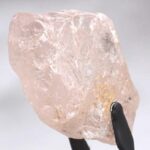
Jul. 27—Following Russia’s brutal invasion of Ukraine, the name of one of summer’s best cocktails, the Moscow Mule, was halved or changed to the Kiev Mule.
But the connection to Russia is little more than a name, and the hasty move came in the same vein as people dumping out vodkas made in Illinois and Connecticut. Putin did not receive residual payments on the sale of vodka and vodka-based cocktails.
A Russian probably wouldn’t recognize a Moscow Mule anyway since the three-ingredient drink was invented in Los Angeles. The mule falls in a class of cocktails known as a buck — a cocktail made of a spirit with citrus juice and ginger beer. Use a glass or copper mug to make the Moscow Mule, and don’t get too hung up on the measurements of 2 ounces of vodka, a half ounce of lime juice and four ounces of ginger beer, garnished with a lime slice and/or mint.
The most important ingredient to customize to your taste and preferred sweetness level will be the ginger beer. Reed’s, Fever Tree and Q are solid choices. If you have it, shaved ice or crushed ice is preferred.
I made my mule with Canadian-made, corn-based Dirty Devil Vodka, which touts itself as gluten-free and is distilled five times with hyper-oxygenated water. It is a tasty, rich vodka with a sweet edge and costs $28 at Pennsylvania Fine Wine & Good Spirits stores.
I’m all for making whiskey a year-round drink, and you can do that with the Kentucky Buck by muddling a few fresh strawberries, adding a half ounce of simple syrup, 2 ounces of whiskey (typically bourbon), 3/4 ounce of lemon juice and two dashes of Angostura bitters. Fill the shaker with ice and shake for a bit. Strain the beverage into a glass, top it with ginger beer and garnish it with a strawberry.
To make a Kentucky Buck recently, I used McKenzie Straight Rye from Finger Lakes Distilling. I prefer using rye in many cocktails, and this heady, fruity rye worked well. At the distillery, this costs $40.
Another fantastic summer cocktail comes from Brazil, where they know how to enjoy nice weather and party. The best way to get a caipirinha is to befriend a Brazilian and mention the caipirinha, as he or she likely will make you one. Despite having just three ingredients, every Brazilian seems to have a unique technique or twist and thinks his or hers is the best. This is a great competition to find yourself judging.
You can build a caipirinha in a sturdy rocks glass by muddling wedges of half a lime with granulated sugar, adding 2 ounces of cachaça (a type of rum) and topping it with ice. It’s that easy.
I have demerara, a type of unrefined sugar, for caipirinha, but lots of Brazilians I know, like those at the Ipanema Grill in North Scranton, prefer using standard white sugar or superfine sugar — probably because it dissolves more easily. You can process your home sugar to make it superfine or make simple syrup to avoid a gritty cocktail.
Lebelon is the single cachaça on Pennsylvania shelves, and it is a good product, if a bit sweet and expensive at $30. Based on knowledgeable recommendations, I use Velho Barreiro Cachaça, which was removed from the state’s special order list but can be found online for just $15 or less. I avoid the brand Ypióca.
The truth is, the quality and brand of the base spirit in a cocktail is only important if you think it is important. If you just want a cocktail and need an ingredient, buy what’s on sale or use a variation with something you have around.
On that same thread, if I have a very good base spirit, like Woodford Reserve or an XO Cognac, I’m hesitant to mix it with liqueurs and juices.
Vodka (most of which is produced outside of Russia) is a good example. Certain cheap and poorly distilled ones stand out, but after a certain point, vodka is vodka, and they all work well.
DAVID FALCHEK, executive director of the American Wine Society, reviews wines each week.
GRADE: Exceptional HHHHH, above average HHHH, Good HHH, Below average HH, Poor H
DAVID FALCHEK, executive director of the american Wine Society, reviews wines each week.




